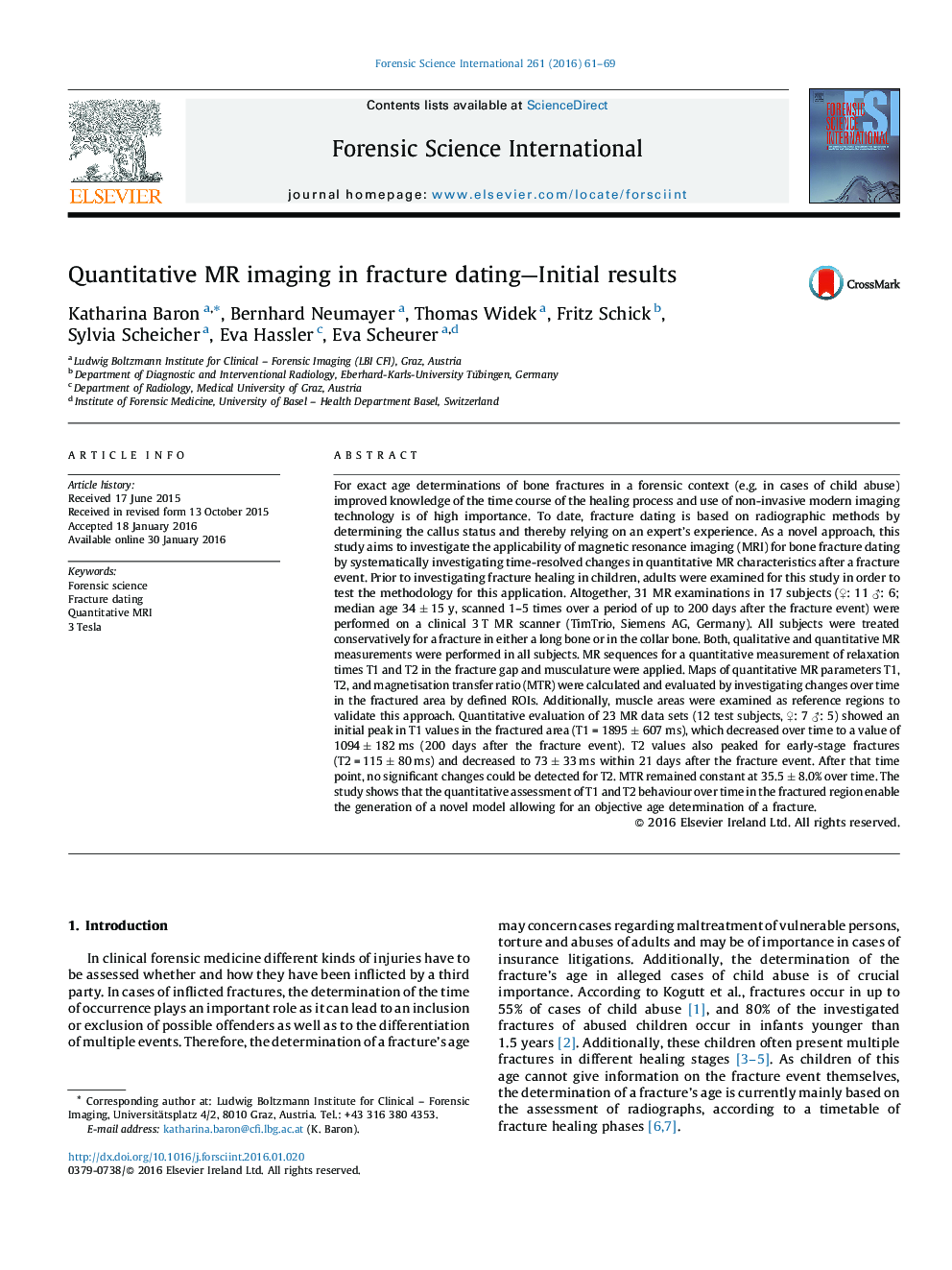| کد مقاله | کد نشریه | سال انتشار | مقاله انگلیسی | نسخه تمام متن |
|---|---|---|---|---|
| 95171 | 160417 | 2016 | 9 صفحه PDF | دانلود رایگان |
• The authors propose a novel and objective approach for fracture dating using MRI.
• A quantitative MR protocol examining muscle values was developed and validated.
• The signal intensity of T1, T2 and MTR in fractured bones was examined over time.
• Time dependant changes in fractures are related to MR signal intensities.
• Building a model for fracture dating based on quantitative results seems promising.
For exact age determinations of bone fractures in a forensic context (e.g. in cases of child abuse) improved knowledge of the time course of the healing process and use of non-invasive modern imaging technology is of high importance. To date, fracture dating is based on radiographic methods by determining the callus status and thereby relying on an expert's experience. As a novel approach, this study aims to investigate the applicability of magnetic resonance imaging (MRI) for bone fracture dating by systematically investigating time-resolved changes in quantitative MR characteristics after a fracture event. Prior to investigating fracture healing in children, adults were examined for this study in order to test the methodology for this application. Altogether, 31 MR examinations in 17 subjects (♀: 11 ♂: 6; median age 34 ± 15 y, scanned 1–5 times over a period of up to 200 days after the fracture event) were performed on a clinical 3 T MR scanner (TimTrio, Siemens AG, Germany). All subjects were treated conservatively for a fracture in either a long bone or in the collar bone. Both, qualitative and quantitative MR measurements were performed in all subjects. MR sequences for a quantitative measurement of relaxation times T1 and T2 in the fracture gap and musculature were applied. Maps of quantitative MR parameters T1, T2, and magnetisation transfer ratio (MTR) were calculated and evaluated by investigating changes over time in the fractured area by defined ROIs. Additionally, muscle areas were examined as reference regions to validate this approach. Quantitative evaluation of 23 MR data sets (12 test subjects, ♀: 7 ♂: 5) showed an initial peak in T1 values in the fractured area (T1 = 1895 ± 607 ms), which decreased over time to a value of 1094 ± 182 ms (200 days after the fracture event). T2 values also peaked for early-stage fractures (T2 = 115 ± 80 ms) and decreased to 73 ± 33 ms within 21 days after the fracture event. After that time point, no significant changes could be detected for T2. MTR remained constant at 35.5 ± 8.0% over time. The study shows that the quantitative assessment of T1 and T2 behaviour over time in the fractured region enable the generation of a novel model allowing for an objective age determination of a fracture.
Journal: Forensic Science International - Volume 261, April 2016, Pages 61–69
